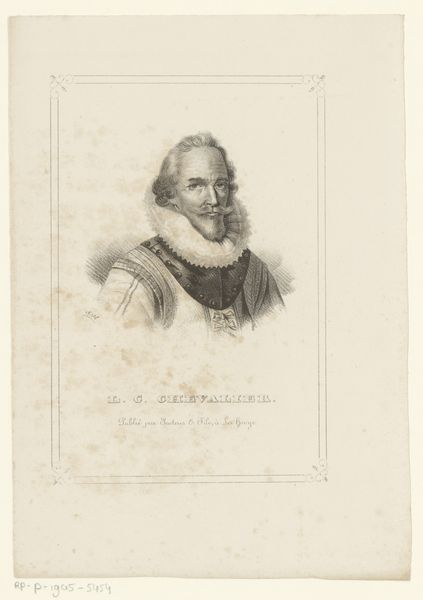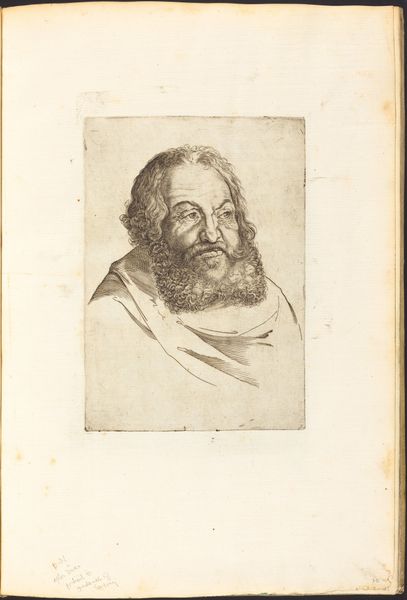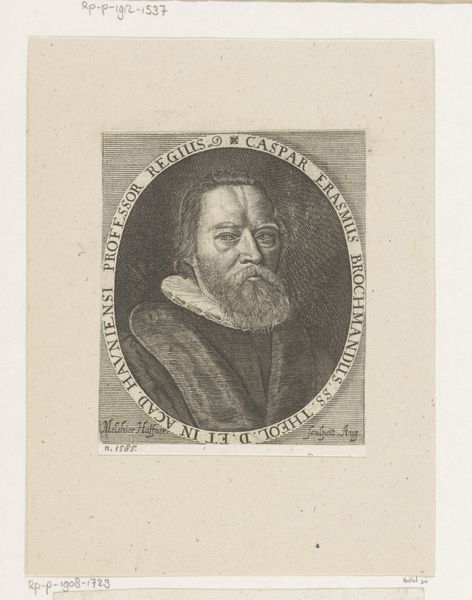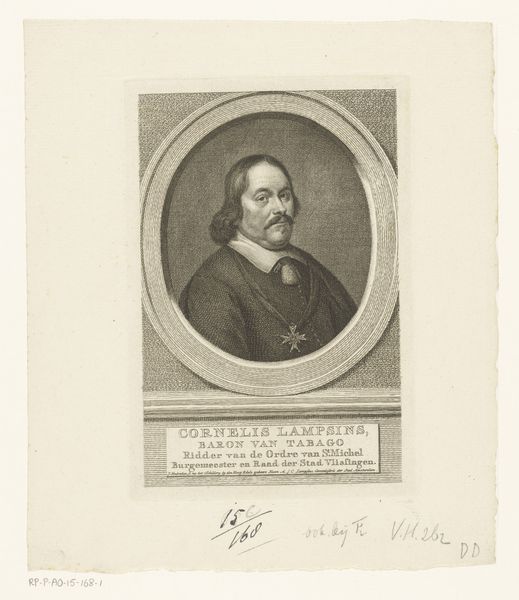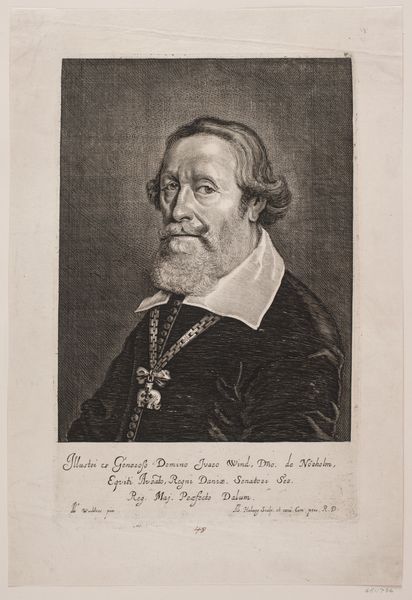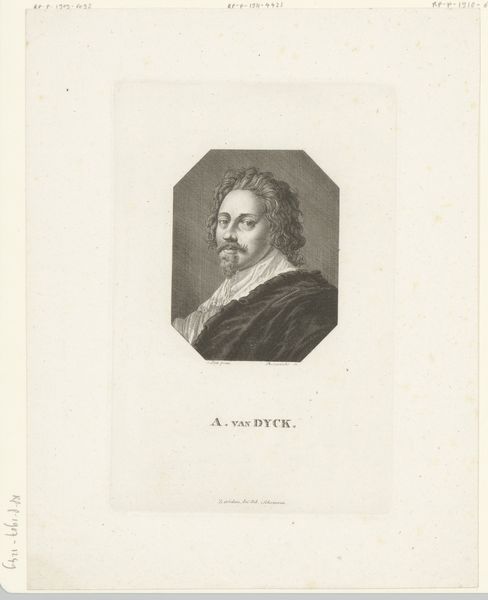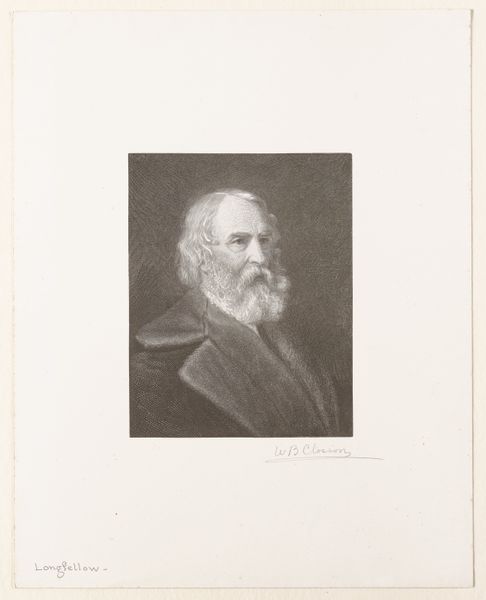
Dimensions: 200 mm (height) x 127 mm (width) (Plademål)
This is a portrait of Ole Worm made by Julius Magnus-Petersen, using engraving. Look closely and you’ll see how the image is composed of thousands of tiny lines etched into a metal plate, which then transferred ink to paper. Engraving was a widespread method of image reproduction before photography became common. It demanded meticulous skill and precision, requiring artisans to master the use of specialized tools and techniques. The engraver's task was to translate an original design or artwork into a printable image, which was a labor-intensive process, demanding hours of focused work. The resulting image, like this portrait, could then be reproduced and disseminated widely, playing a vital role in circulating knowledge, ideas, and visual culture during the 19th century. So, when you look at this print, consider it not just as a portrait, but as a testament to the skilled labor and industrial processes that shaped the production and consumption of images in the modern era.
Comments
No comments
Be the first to comment and join the conversation on the ultimate creative platform.


